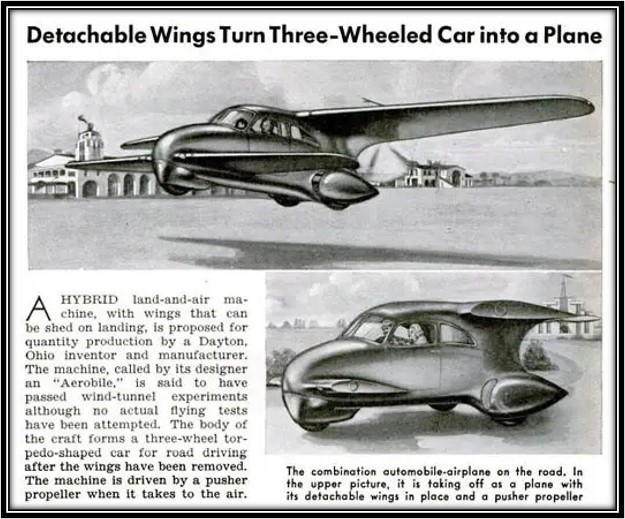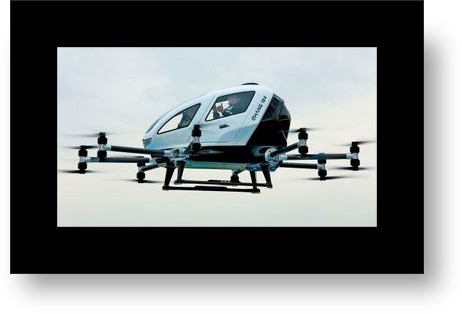Good morning fellow ECAHF’ers and happy Hump Day and May Day!
Many of us remember when flying cars were predicted to be a future “certainty”. Same with Dick Tracy’s wrist radios and futuristic video telephones where you could actually see the person to whom you were speaking.
HAHAHAHAHA! What were we thinking?
Oh. Wait a second. Wrist radios (Apple watches) and video telephones (our cell phones) have actually happened. OMG! Who would have thunk it?
Are flying cars really next? The below historical examples of our predictions for flying cars in general use come from the website https://www.popsci.com/cars/article/2010-10/archive-gallery-flying-cars/


In the fall of 1944, we ran a contest asking readers to submit designs for their ideal postwar private planes. Much to our surprise, analysis of the 3,345 entries revealed that only 10 percent of people surveyed wanted roadable aircraft. The vast majority of people preferred low-wing monoplanes or planes with pusher props, the reason being that they favored safety over novelty. The tailless design pictured left was submitted by Ray Ring, of Framingham, Mass. Only about 14 percent of the people who designed flying cars preferred foldable wings over detachable ones. Courtesy Popular Science.

This torpedo-shaped vehicle, called the “Aerobile,” was manufactured by an unnamed inventor from Dayton, Ohio. In theory, a pusher propeller would drive the plane during flight, and we say “in theory” because no one actually attempted to fly this thing. At best, the Aerobile was one of the more aesthetically pleasing prototypes released during the mid-20th century. Courtesy Popular Science.
And now for “reality”…and what could actually happen in the near future (next year?!) with our dream of flying cars.
China green-lights mass production of autonomous flying taxis — with commercial flights set for 2025
By Roland Moore-Coyler
From Live Science livescience@smartbrief.com published 3 days ago
The EHang EH216-S autonomous flying taxi is the first eVTOL ready for mass production and could lead the way for flying cars around the world.

Autonomous flying taxis could soon be a reality after vehicle manufacturer EHang obtained the world’s first production certificate to manufacture them in China.
EHang's EH216-S "passenger-carrying pilotless" electric vertical takeoff and landing (eVTOL) vehicle received clearance to be mass-produced from the Civil Aviation Administration of China (CAAC), company representatives announced in a statement on April 7.
Many companies manufacture eVTOLs, but they have so far only been developed as prototypes for test flights. This decision represents a notable step towards introducing eVTOLs commercially.
"Our vision is to introduce safe and reliable pilotless eVTOL aircraft to the global market, thereby offering safe, autonomous and eco-friendly air mobility services to everyone," Huazhi Hu, CEO of EHang, said in the statement.

The production certificate gives EHang the go-ahead to manufacture flying cars, encompassing the sourcing of raw materials, supply chain management, quality control and testing, in addition to after-sales repair and maintenance — all verified by comprehensive reviews and inspections.
Taking to the skies
First announced in 2018, the EHang EH216-S is a small, fully-electric VTOL craft with a carbon fiber fuselage and 16 propellers powered by 16 motors. It has a cruise speed of 62 mph (100 km/h) and a maximum altitude of around 10,000 feet (3,000 meters).
Onward and upward!
Kind regards,
Barry
Barry R. Fetzer
ECAHF Historian
